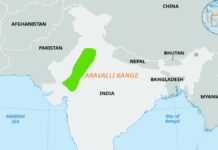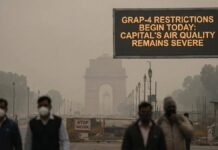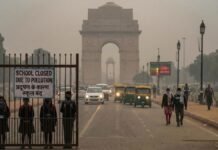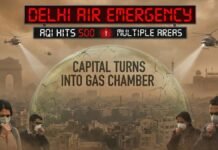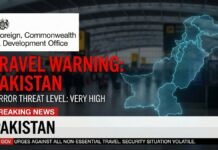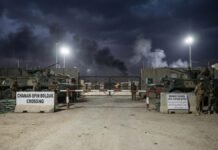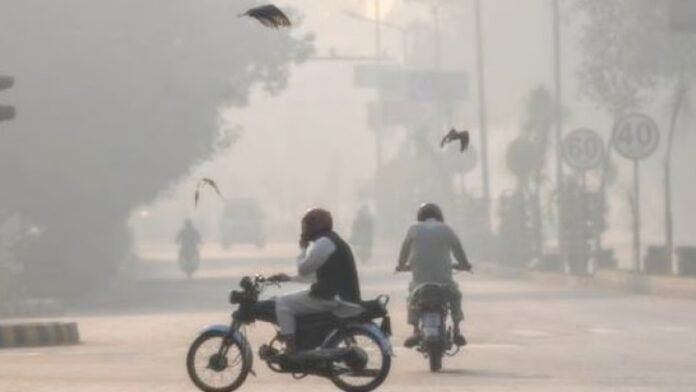
Key Points
- Lahore’s AQI reaches 266 on October 21, 2025, making it world’s second most polluted city
- Pakistani government blames Diwali fireworks from India for deteriorating air quality in Punjab province
- Environmental Protection Department claims smoke from New Delhi and North India drifted into Pakistan
- Environmental experts dispute blame game, cite local sources: stubble burning, traffic emissions, industrial pollution
- Punjab government launches ‘Anti-Smog Gun Campaign’ claiming 70% pollution reduction in Kahna area
- Lahore’s AQI hit “hazardous” 529 in January 2025, indicating year-round air quality crisis
- Pattern of blaming India allows Pakistani authorities to avoid addressing domestic pollution sources
- Cross-border air pollution real but cannot explain Lahore’s chronic smog problem
Islamabad: The Pakistani government has accused India of poisoning its air through Diwali fireworks, claiming that smoke from the Hindu festival crossed international borders and caused dangerous pollution levels in Punjab province cities, particularly Lahore. The accusation, made on Tuesday, October 21, 2025,the day after Diwali, comes as Lahore’s Air Quality Index (AQI) reached 266, ranking it as the world’s second most polluted city behind only Delhi.
Lahore’s Pollution Crisis
Air quality deteriorated dramatically across Pakistan’s Punjab province on Tuesday morning, with monitoring stations recording hazardous pollution levels in multiple cities. Lahore, Pakistan’s second-largest city and cultural capital with a population exceeding 11 million, bore the brunt of the smog crisis.
The AQI reading of 266 places Lahore firmly in the “very unhealthy” category according to international air quality standards. At this level, everyone may experience health effects, with sensitive groups including children, elderly residents, and those with respiratory conditions facing serious risks. Health advisories typically recommend avoiding outdoor activities when AQI exceeds 200.
The timing of the pollution spike occurring the morning after Diwali celebrations in India provided Pakistani officials with a convenient scapegoat for air quality problems that actually plague the region throughout the winter season, regardless of festival timing.
Pakistani Government’s Accusations
Officials from Pakistan’s Punjab provincial government and the Environmental Protection Department (EPD) issued statements blaming India for the toxic air blanketing Lahore and surrounding cities. The accusations centered on claims that polluted air containing smoke from Diwali fireworks burned across North India, particularly in New Delhi, and drifted westward across the international border into Pakistani territory.
Lahore officials specifically pointed to transboundary air pollution from the Indian capital region, asserting that prevailing wind patterns carried particulate matter and toxic gases from Indian cities into Pakistan. The EPD’s statement emphasized that slow wind speeds prevented dispersion of the imported pollution, causing it to accumulate over Pakistani cities.
The government narrative portrayed Pakistan as a victim of Indian environmental negligence, with celebratory fireworks in a neighboring country creating public health emergencies for Pakistani citizens. This framing allows Pakistani authorities to position themselves as powerless against external pollution sources while deflecting attention from domestic contributors to poor air quality.
Scientific Reality of Cross-Border Pollution
While transboundary air pollution is scientifically real and does occur between India and Pakistan, environmental experts emphasize that the phenomenon cannot explain the magnitude or persistence of Lahore’s air quality crisis. Air masses do cross international borders, and pollution from one country can affect neighboring regions under certain meteorological conditions.
However, atmospheric scientists note that pollution dispersion over the roughly 400-kilometer distance between Delhi and Lahore would significantly dilute concentrations. Moreover, wind patterns in late October do not consistently blow from east to west in the manner required for sustained transport of Indian pollution into Pakistan.
The accusation also ignores the fact that Delhi itself consistently ranks among the world’s most polluted cities and faces its own severe air quality crisis, particularly during the post-monsoon period when agricultural stubble burning combines with unfavorable meteorological conditions to trap pollutants over the Indo-Gangetic Plain.
Lahore’s Domestic Pollution Sources
Environmental researchers and independent air quality monitors consistently identify local and regional sources as the primary drivers of Lahore’s chronic pollution problem. Three major contributors dominate:
Agricultural stubble burning represents the single largest seasonal pollution source. Farmers across Punjab province set fire to crop residue after harvest to quickly clear fields for the next planting cycle. This widespread practice, occurring simultaneously across vast agricultural areas, generates enormous quantities of particulate matter that blanket nearby cities, including Lahore.
The practice peaks during October and November as rice harvest concludes and wheat planting begins. Despite government bans and awareness campaigns, stubble burning continues because farmers lack affordable alternatives for crop residue management. The pollution from this source is entirely domestic, originating within Pakistan rather than crossing international borders.
Vehicular emissions constitute another major pollution source. Lahore’s rapidly growing population has driven explosive increases in vehicle ownership, with millions of cars, motorcycles, trucks, and buses clogging roads daily. Many vehicles use low-quality fuel and lack modern emission controls, pumping toxic gases and fine particulates into the atmosphere.
Traffic congestion exacerbates the problem, as idling and slow-moving vehicles produce disproportionately high emissions compared to free-flowing traffic. The city’s inadequate public transportation infrastructure forces reliance on private vehicles, creating a vicious cycle of worsening congestion and pollution.
Industrial emissions add to the toxic air mix. Lahore hosts numerous factories, power plants, and manufacturing facilities, many operating with outdated technology and minimal pollution controls. Industries including textiles, chemicals, cement, steel, and brick kilns release pollutants directly into the atmosphere with limited regulatory oversight or enforcement.
Pattern of Blame Deflection
Pakistani officials’ tendency to blame India for Lahore’s air pollution represents a recurring pattern observed over multiple years. Whenever pollution levels spike during autumn and winter months, government statements frequently reference Indian sources while downplaying or ignoring domestic contributors.
This blame-shifting serves multiple political purposes. It deflects public anger about health-threatening air quality away from Pakistani authorities responsible for environmental regulation and enforcement. It exploits existing India-Pakistan tensions to frame an environmental crisis as a national security issue requiring public solidarity rather than government accountability.
The narrative also provides cover for inaction on difficult domestic policy challenges. Addressing stubble burning requires significant investment in agricultural equipment and training. Reducing vehicular emissions demands enforcement of emission standards, improvements in fuel quality, and development of public transportation alternatives, all expensive and politically challenging initiatives.
Blaming India requires no policy changes, budget allocations, or confrontation with powerful agricultural and industrial interests that benefit from lax environmental regulation. It represents the path of least resistance for officials seeking to appear concerned about air quality without implementing substantive solutions.
Anti-Smog Gun Campaign
In response to the worsening air quality crisis, the Punjab provincial government announced the launch of an “Anti-Smog Gun Campaign” aimed at reducing particulate matter in the atmosphere. The initiative deploys specialized equipment designed to spray fine water mist into the air, theoretically causing pollutant particles to become heavier and settle to the ground rather than remaining suspended in the breathing zone.
Officials claimed the campaign achieved a 70% reduction in air pollution in the Kahna area, where it was first implemented. However, environmental scientists express skepticism about such claims, noting that smog guns or anti-smog cannons produce highly localized and temporary effects at best.
The water mist sprayed by these devices can marginally reduce particulate concentrations in the immediate vicinity through mechanical settling. However, the effect dissipates quickly as new pollution sources continue emitting and air circulation patterns redistribute pollutants. The approach does nothing to address emission sources and cannot scale to treat an entire city’s air volume.
Critics view anti-smog guns as theatrical gestures designed to create the appearance of action without implementing the systemic changes necessary to meaningfully improve air quality. The technology’s popularity among South Asian governments stems more from its visibility and public relations value than from demonstrated environmental effectiveness.
Historical Context: January’s “Hazardous” AQI
The claim that Indian Diwali fireworks caused Lahore’s October air quality problems becomes even less credible when considered alongside the city’s year-round pollution patterns. On January 11, 2025, months before Diwali and during a period of no major Indian festivals, Lahore’s AQI reached 529, classified as “hazardous” on air quality scales.
An AQI of 529 represents air quality so dangerous that the entire population faces serious health effects from even brief exposure. At this level, emergency conditions exis,t and authorities typically recommend total avoidance of outdoor activities, school closures, and warnings for residents to remain indoors with air purifiers.
The January pollution crisis, occurring in mid-winter when stubble burning has concluded but heating emissions peak and temperature inversions trap pollutants, demonstrates that Lahore faces severe air quality problems throughout the cooler months regardless of activities in neighboring India.
The winter pollution pattern results from a combination of increased emissions from heating, reduced atmospheric mixing due to cooler temperatures, and meteorological phenomena, including temperature inversions that trap pollutants close to ground level. These factors are entirely local and regional, unrelated to Indian festivals or activities.
Regional Air Quality Crisis
Both India and Pakistan face severe air quality challenges during the autumn and winter months, with cities across the Indo-Gangetic Plain experiencing hazardous pollution levels. Delhi, Lahore, Karachi, Kolkata, and numerous smaller cities struggle with similar pollution sources, including agricultural burning, vehicular emissions, industrial pollution, construction dust, and household heating.
The shared nature of the air quality crisis suggests that regional cooperation rather than blame and accusation would better serve public health interests. Coordinated policies on agricultural practices, emission standards, industrial regulation, and clean energy transitions could benefit populations on both sides of the international border.
However, the broader India-Pakistan relationship remains strained by historical conflicts, territorial disputes, and mutual suspicion. This political context makes environmental cooperation difficult despite clear technical arguments for collaborative approaches to shared challenges.
International border monitoring of air quality and pollution sources exists in other regions, including Europe and North America, where neighboring countries coordinate environmental policies and share data despite varying levels of political alignment. Similar frameworks could theoretically benefit South Asia, but remain politically unfeasible given current bilateral tensions.
Public Health Implications
Regardless of pollution sources—whether domestic, transboundary, or a combination Lahore’s residents suffer serious health consequences from prolonged exposure to hazardous air quality. Medical research links air pollution to respiratory diseases, cardiovascular problems, developmental issues in children, pregnancy complications, and reduced life expectancy.
Pakistani hospitals report increased admissions for asthma, bronchitis, pneumonia, and other respiratory conditions during high pollution periods. The health burden falls disproportionately on vulnerable populations, including children, elderly residents, pregnant women, and those with pre-existing health conditions, as well as lower-income residents who cannot afford air purifiers or lack the option to remain indoors.
Long-term exposure to the levels of air pollution experienced in Lahore and other Pakistani cities measurably reduces life expectancy and quality of life. Studies estimate that residents of heavily polluted South Asian cities lose years of life expectancy compared to populations breathing clean air.
The economic costs of air pollution include healthcare expenses, lost productivity from illness and premature death, and impacts on tourism and international business investment. Cities with severe pollution problems face challenges attracting skilled workers and foreign investment, creating long-term economic disadvantages.
Need for Domestic Solutions
Environmental advocates and health professionals emphasize that meaningful improvements in Lahore’s air quality require sustained domestic policy initiatives rather than blame directed at neighboring countries. Essential measures include:
Providing farmers with affordable alternatives to stubble burning, including mechanical equipment for crop residue management, training programs, and financial incentives for sustainable practices. This addresses the single largest seasonal pollution source.
Enforcing vehicle emission standards, improving fuel quality, expanding public transportation, and transitioning to cleaner vehicle technologies, including electric options. These measures can significantly reduce daily pollution from transportation.
Requiring industrial facilities to install pollution control equipment, conducting regular emissions monitoring, and enforcing penalties for violations. Strengthening regulatory frameworks and enforcement capacity is essential for controlling industrial pollution.
Transitioning household heating and cooking from solid fuels to cleaner alternatives, improving building energy efficiency, and developing renewable energy capacity to reduce reliance on coal and other polluting energy sources.
Implementing urban planning measures, including green spaces, reduced construction dust through better site management, and zoning policies that separate residential areas from heavy industrial facilities.
Political Will and Resource Constraints
The gap between necessary air quality interventions and actual policy implementation reflects both political will deficits and genuine resource constraints. Pakistan faces significant fiscal challenges that limit government capacity for major infrastructure investments or subsidy programs.
However, the cost of air pollution measured in healthcare expenses, lost productivity, and reduced life expectancy far exceeds the investment required for pollution control measures. Economic analyses consistently show that air quality improvements generate net benefits even before considering health and quality of life gains that are difficult to monetize.
Political factors, including corruption, institutional weakness, competing priorities, and short-term political calculations, frequently trump longer-term public health considerations in policy decisions. Building constituencies for environmental action and creating accountability mechanisms for air quality outcomes remain ongoing challenges.
Moving Forward
As Lahore enters another winter of hazardous air quality, the pattern of blaming external sources while avoiding domestic policy reforms continues unabated. Pakistani citizens increasingly recognize the gap between official narratives and ground realities, with social media commentary often mocking the blame-India refrain.
Growing public awareness and frustration may eventually generate sufficient political pressure for substantive action. Climate activism and environmental movements are emerging in Pakistan as in other countries, though these face significant challenges in authoritarian political contexts.
International organizations, including the World Health Organization and environmental groups, continue highlighting South Asia’s air quality crisis and offering technical assistance for improvement programs. Whether Pakistani authorities will accept responsibility for domestic pollution sources and implement necessary reforms remains uncertain.
For now, Lahore’s residents will continue breathing hazardous air while their government blames fireworks set off hundreds of kilometers away, a convenient fiction that changes nothing about the toxic reality enveloping their city.













